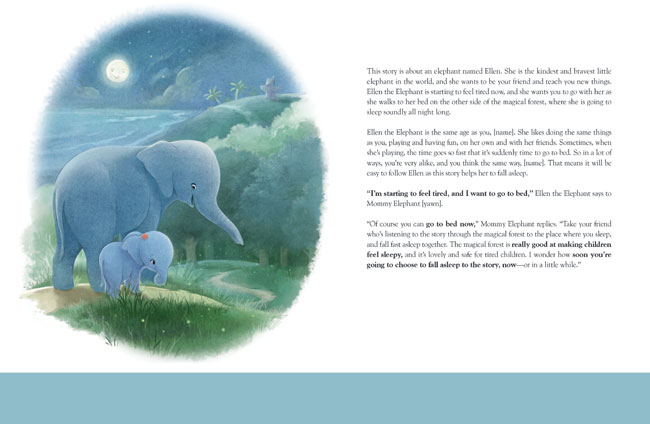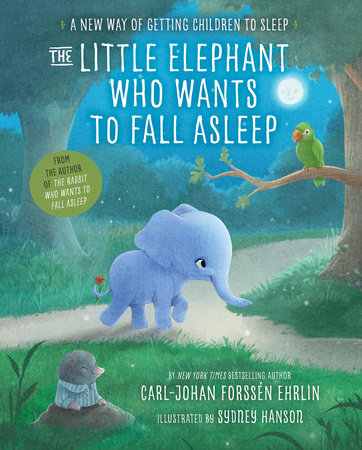The Mom Who Wants Her Kids to Fall Asleep: One Family Takes the Bestselling Sleep Book for a Test Run
by Jennifer Ridgway
In 2015, a self-published children’s book called The Rabbit Who Wants to Fall Asleep burst onto the kids’ lit scene, claiming to be THE bedtime story for kids because it could literally put them to sleep. And its initial success was understandable — bedtime is a harrowing time for many parents and the desire for a magic bullet can be strong!
So how can a book make kids fall asleep? Carl-Johan Forssén Ehrlin, the author of The Rabbit Who Wants to Fall Asleep, has a background in psychology and incorporates many techniques that have sleep-inducing effects into the reading experience. He includes a Reader’s Guide for parents and caregivers on how to actually read the book, and the text is coded throughout (italicized phrases should be read in a slow rhythm, bold words are to be emphasized, and yawns should be placed where noted). The story itself, which follows a rabbit who wants to fall asleep, is admittedly slow and somewhat dull, but that is also by design — too much action and imagination causes our children’s brains to fire up rather than calm down.
For some reason, though, I never tried reading The Rabbit Who Wants to Fall Asleep with my pre-K twins. This isn’t because my family doesn’t suffer from its own sleep issues! Oh no … having two children leads to more than double the problems. I just somehow never got around to it. But when Ehrlin’s new book, The Little Elephant Who Wants to Fall Asleep, recently hit the shelves, I decided to give it a test run. With a new illustrator, it was easy to convince my kids to give it a go, too — Sydney Hanson’s illustrations are both cute (my daughter in particular is drawn to its sweet animals) and have a dreamy quality to them, using colors associated with calm (lots of shades of blue!) and soft edges.
Knowing that The Little Elephant Who Wants to Fall Asleep contains “coded” text, just like its predecessor, I decided to sit down to read through it myself before reading it aloud to my kids at bedtime. I wanted to have an idea of what to expect beforehand so that I wouldn’t stumble and break the flow of the book when I read it aloud … and I almost fell asleep reading it! Like most parents, I’m perpetually tired, but I’ve always had a hard time falling asleep, even when exhausted. This book certainly seemed promising.
Later that night, we snuggled together in bed, my son on my left and my daughter on my right. My daughter is similar to me in that she usually has a hard time “shutting down” in the evening. Our stories at bedtime involve a lot of questions and talking and interrupting. When I started reading The Little Elephant Who Wants to Fall Asleep, she asked me one question on the first page, but then remained quiet for the rest of the story and she yawned a lot. At the end of the book, we sang “Twinkle Twinkle Little Star,” just like we do every night, and she moved to her own bed. She didn’t fall asleep during the book, but she was asleep within three minutes of me leaving the room. Even better: When I looked down at my son about five minutes into the book, he was fast asleep. He didn’t even stir when I moved him to get out of the bed! Success!
Tips for Incorporating the Book Into Your Bedtime Routine:
Thinking of taking The Little Elephant Who Wants to Fall Asleep for a spin with your kids? Check out these mom-approved tips:
- There is an audiobook version of The Little Elephant Who Wants to Fall Asleep that would be a great option to put on when leaving the room, especially if, like me, you are lulled half asleep reading the book yet have things to do after the kids go to bed.
- Make sure to go through the “Tips from the Author” and “Success Factors” sections at the back of the book. They provide some answers to questions you might have about the book as well as ideas for making bedtime a little easier.
- Read the book at least once before reading it to your child — since this is a different sort of reading experience, I found it helpful to go through and practice to get a sense of how to change my tone and speed as I read aloud.
- Get your kids comfortably settled in bed before you begin reading. I felt bad having to move both of them at the end of the book, especially the sleeping one!




